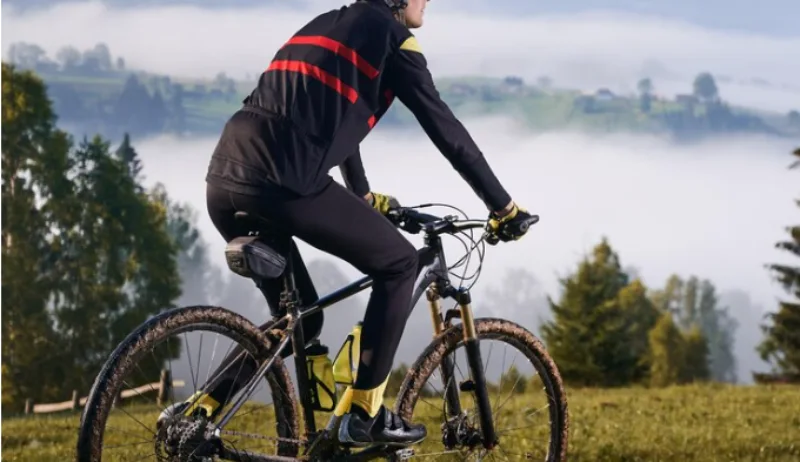Sunburn blisters can significantly impair a cyclist’s performance by causing intense pain and discomfort, making it difficult to continue riding. These blisters increase the risk of infection and long-term skin damage, which can lead to more severe health issues such as skin cancer.
Sunburn blisters for cyclists can be prevented by drinking plenty of water, which prevents dehydration. Apply cold, damp compresses to the blisters to reduce heat and discomfort. Use aloe vera-containing moisturizer on the affected area. Remember not to pop the blisters and avoid sun exposure until they heal.
In this blog post, we’ve got the scoop on some practical ways to treat sunburn blisters for cyclists and get them back on track.
How To Treat Sunburn Blisters For Cyclist: 8 Effective Ways

Cycling enthusiasts often spend long hours under the sun, putting them at a heightened risk of sunburn. Sunburn blisters can be painful and detrimental to a cyclist’s performance and overall health. Knowing how to treat these blisters is crucial for a swift recovery and a return to the saddle. Here are some of the effective treat ways to unburn blisters for cyclist.
Drink Plenty of Water
Staying hydrated is one of the most critical steps in treating second-degree sunburn blisters, especially those on cyclists’ shoulders and faces. When skin is sunburned, it loses moisture, leading to dehydration. Drinking water accelerates the healing process.
Get 8-10 glasses of water daily. You might need even more if you’re cycling or engaging in other physical activities. Electrolyte-rich drinks can also help restore the body’s balance.
Apply Cold, Damp Compresses To Blisters
Cold, damp compresses can provide immediate relief from the pain and discomfort of sunburn blisters, particularly those on the shoulders and face for cyclists. They help reduce inflammation and prevent the blisters from worsening.
Wet a clean, soft cloth with cold water and gently place it over the affected areas for 15-20 minutes. Repeat this process several times a day for the best results. Skin shouldn’t be exposed to ice because it can cause further damage.
Apply Moisturizer with Aloe on the Burn

You’ve heard of aloe vera’s soothing and healing properties. Applying a moisturizer containing aloe can relieve inflammation, and pain, and speed up sunburn blister healing.
Aloe vera has soothing and healing properties. An aloe moisturizer can relieve itching, reduce inflammation, and speed up the healing of second-degree sunburn blisters.
Don’t Pick or Pop the Blisters
It might tempt you to pop or pick at sunburn blisters, but doing so can lead to infections and prolong the healing process. The fluid inside the blisters helps protect the underlying tissue and allows the skin to heal more effectively.
Leave the blisters alone and allow them to heal naturally. If a blister does pop on its own, clean the area with mild soap and water and cover it with a sterile bandage.
Leave Them Alone
Letting the blisters heal naturally without interference is crucial. If the blisters are in an area prone to friction, such as where your cycling gear rubs, infections and scarring are reduced. Consider covering them with a non-stick bandage to protect them while allowing air to circulate.
Cleanse the Affected Area
Infection can be prevented by keeping the affected area clean. Use a mild soap and lukewarm water to cleanse the skin gently. Cleanse the area once or twice daily. With a clean towel, pat the area dry and to avoid rubbing the skin.
Take Ibuprofen
An ibuprofen prescription can relieve the pain and swelling associated with sunburn blisters, making healing more comfortable and manageable.
Follow the dosage instructions provided on the packaging or consult with a healthcare professional. To prevent gastrointestinal discomfort, do not exceed the recommended dose and avoid taking ibuprofen on an empty stomach.
Avoid Sun Exposure Until the Blisters Heal

Exposing sunburned skin to more UV rays can worsen the condition and delay healing. It can also increase the risk of further blisters and long-term skin damage. Stay indoors as much as possible until the blisters have healed. If you must go outside, wear loose, protective clothing that covers the affected areas, and apply a high-SPF sunscreen to uncovered skin.
Additional Tips for Cyclists
- Wear Sun-Protective Gear: Invest in cycling gear that offers UV protection. This includes UV-blocking sleeves, cycling jerseys, and sunglasses with UV protection.
- Schedule Rides Wisely:Try to schedule your rides early in the morning or late afternoon when the sun’s rays are less intense. Avoid riding during peak UV hours, typically between 10 a.m. and 4 p.m.
- Regular Skin Checks: Perform skin checks for signs of sun damage, including new or changing moles. Early detection of skin issues can prevent more serious conditions like skin cancer.
- Use High-SPF Sunscreen: Always apply sunscreen with at least an SPF of 30 to all exposed skin areas. Reapply every two hours or more frequently if you’re sweating heavily.
- Stay Informed: monitor the UV index in your area and adjust your plans accordingly. Higher UV index values show a greater risk of skin damage from sun exposure.
Conclusion
Sunburn blisters, especially second-degree ones on the shoulders and face, can be a painful and frustrating experience for cyclists. Still, with the proper care and precautions, you can heal quickly and return to enjoying your rides. Staying hydrated, using cold compresses, applying aloe vera moisturizer, and taking ibuprofen are just a few ways to treat sunburn blisters effectively.
Avoid picking at blisters, cleanse the affected area gently, and protect your skin from further sun exposure. By following these steps and incorporating sun-protective measures into your daily routine, you can maintain healthy skin and continue to enjoy the sport you love.
FAQs
How Long Do Sun Blisters Last?
Blisters from sunburn can be excruciating and take about a week to heal. Skin cancer and melanoma are also associated with this type of burn. For 6–12 months after blisters heal, blister scars can appear on the skin’s surface as dark or light spots.


